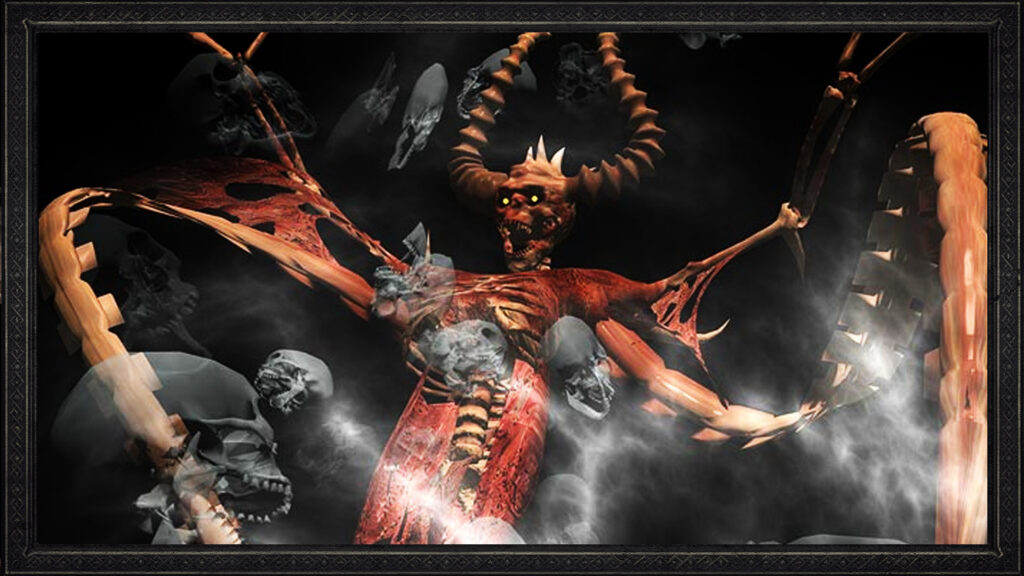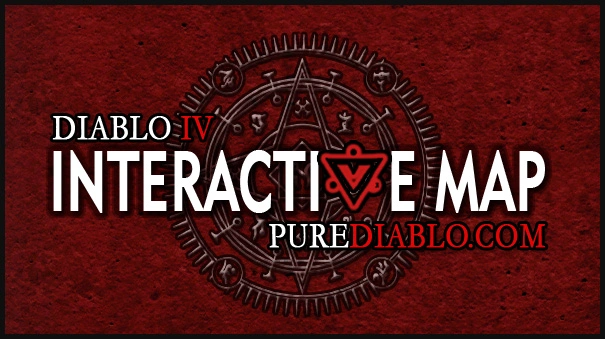Overcoming Diablo 2 Monster Immunities
Diablo 2 monster immunities become more prevalent as you progress through the game. There are six primary damage types: physical, cold, fire, lightning, magic, and poison. In normal difficulty, and in early nightmare difficulty, various enemies are somewhat resistant to one or more of these. By the time you get to late nightmare difficulty, you will encounter a few monsters which are 100% (or higher) resistant (that means immune) to certain damage types. Throughout hell difficulty, almost every monster is immune to at least one type of damage. Very likely, you have carefully cultivated and synergized a particular type of damage during your character’s first sixty or seventy levels. Therefore, also very likely, you will be frustrated and rankled when you encounter those monsters that are completely unharmed by whatever damage you’re dishing out.
When playing with others, you can join with players that must handle whatever you cannot, but single players need more creativity, planning, finesse, and luck in order to deal with immune foes. It’s one of the challenges that makes the single player experience so engaging! Here are four options for overcoming this challenge:
- Reduce monsters’ resistances,
- Diversify damage types,
- Let the mercenary fight them, or
- Run away.
Reduce monsters’ resistances
Two character classes have skills that can reduce monster resistances below 100% (immune) levels:
- A Paladin could use a Conviction aura, which lowers Fire, Cold, and Lightning resistances.
- A paladin could also use a Sanctuary aura, which negates every undead monster’s physical resistance.
- A Necromancer could use the Lower Resist curse, which works against Fire, Cold, Lightning, and Poison resistances.
- A necromancer also has Amplify Damage and Decrepify curses, which lower Physical damage resistance.
Conviction, Lower Resist, Amplify Damage, and Decrepify work as advertised when used against merely resistant (but not immune) enemies. However, they are reduced to 20% effectiveness when used against immune monsters.
- Example: suppose a paladin fights a hell difficulty fallen demon on the Blood Moor, and activates a level 1 Conviction aura. Ordinarily, this aura will lower monsters’ Fire, Cold, and Lightning resistances by 30%. However, the fallen demon is 100% resistant (hence immune) to fire. In this case, the aura only reduces fire resistance by six percent. It does break the immunity, but the fallen will still remains unharmed by 94% of the fire damage it receives.
- Another example: suppose the same paladin, with the same Conviction aura, fights a hell difficulty zombie on the same Blood Moor. The zombie is 120% resistant to cold damage, and the aura only reduces that resistance to 114%, so the zombie remains unharmed by any and all cold damage.
Druids, Barbarians, Assassins, and Amazons do not have a skill that reduces resistances, and while Sorceresses have Cold Mastery to lower cold resistances, alas, it never breaks cold immunity. Regardless, any character may hunt or shop for a magic dagger, wand, or staff with Lower Resist charges. A level 1 Lower Resist charge lasts twenty seconds, and lowers enemy resistances by 31%. In case of immunity, level 1 Lower Resist only reduces a resistance by 6%, but that’s still enough to break the immunity of a 100% to 105% resistant monster. As long as the weapon is not ethereal, such a wand or dagger can later be repaired and recharged to curse up to 67 times, or up to 22 times for such a staff.
There are a few items that can produce immunity-breaking curses or auras. Some are unique items, such as The Gavel of Pain, The Reaper’s Toll, or Azurewrath. Others are runewords, such as Infinity or Lawbringer, now available in Diablo II Resurrected to single players, and also in legacy game versions (1.14d and earlier) to single players with a forum-approved modification that enables ladder runewords. All of these unique items and runes are rather difficult to obtain, so you probably won’t have one of these unless you are a doggedly determined magic finder, rune finder, or item trader.
Diversify damage types
Another straightforward way to handle immune monsters is to develop and use a backup attack that deals a different type of damage. The problem is that your alternate damage type needs to hit hard enough to matter, especially against a monster that replenishes its own life during combat.
Consider these two examples:
- Suppose you play a character that usually delivers physical damage from a weapon. Then suppose, in hell difficulty, you encounter an enemy that is immune to physical damage. During your adventures, you may have collected charms that add fixed amounts of other types of damage: fire, cold, lightning, or poison. You might also have equipped weapons, armor, and jewelry that provide one or more of these non-physical damage types; there are even a few unique items and runewords which add magic damage. Calculate or estimate: on average, how much non-physical damage is inflicted with each successful hit? Personally, I get pretty frustrated if that average is only a hundred or so; I prefer that average to be several hundreds or even thousands. But that’s my judgment. Different players have different thresholds of patience. How little non-physical damage can you tolerate and still have fun against PIs?
- On the other hand, suppose you play a character that usually delivers fire damage, whether with a weapon skill or by casting spells. Also suppose, in hell difficulty, you encounter a fire immune foe. On average, how much non-fire damage can that character cause? Again, in my opinion, if that average is less than about two hundred, it might take a long time to kill that fire immune monster. How little non-fire damage can you tolerate and still have fun against FIs?
Crushing Blow and Open Wounds can cause extra damage, independent of the six primary damage types. Even against physically immune monsters, if your character can manage to cause even one hit point of non-physical damage with a weapon, that alone can be enough to also apply crushing blow or open wounds. (Note: Deadly Strike is another “extra damage” item attribute, but it only magnifies physical damage.)
Besides charms and other item-based weapon damage, it’s also possible to get alternate damage types from skills. Here is a brief rundown of skill-based damage types available to each class:
All classes
- Physical: Attack and Throw cause at least some physical damage, depending on the weapon. However, it’s pretty uncommon for either of those to deliver acceptable damage per successful hit, unless their damage is enhanced somehow.
- Fire: Sometimes monsters drop flaming potions that can be thrown as missile weapons, but after early normal difficulty they don’t cause enough fire damage to really matter.
- Poison: Sometimes monsters drop poisonous potions that can be thrown as missile weapons. After early normal difficulty they don’t cause enough poison damage to really matter. But in every difficulty, they can stop a monster from replenishing its own life for a brief poison duration, which might be an occasionally useful tactic.
Amazon
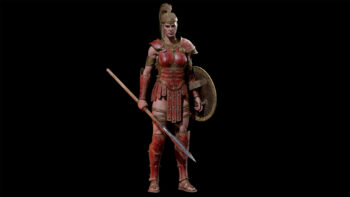 Physical:
Physical:- Bow and Crossbow: Most of these skills cause the same physical damage as Attack, except for two that cause somewhat more (Magic Arrow and Guided Arrow), and two that cause somewhat less per hit, but can score many hits (Multiple Shot and Strafe). If a bow skill is to be a physical damage backup, the equipped missile weapon probably matters at least as much as the chosen skill.
- Javelin and Spear: Up to skill level 5, Jab can score multiple hits, and does less damage per hit than normal Attack, but causes as much or more damage at higher skill levels. Impale and Fend both do much more damage than Attack. The rest inflict the same physical damage as Attack, except for Lightning Bolt, which doesn’t cause any physical damage at all. As far as a physical backup attack for lightning-focused Amazons: with a good weapon and some +skills, even just one point in Jab can be enough to be effective against lightning immunes.
- Passive and Magic: A summoned Valkyrie causes physical damage, and can be very effective with enough skill levels.
- Fire: Fire Arrow, Exploding Arrow, and Immolation Arrow. As a backup fire attack, Exploding Arrow and Immolation Arrow are both popular, but should have significant skill and synergy investment.
- Cold: Cold Arrow, Ice Arrow, and Freezing Arrow. As a backup cold attack, synergized Freezing Arrow is very popular. Even a one-point-wonder FA is nice to temporarily immobilize monsters.
- Lightning: Power Strike, Charged Strike, Lightning Strike, Lightning Bolt, and Lightning Fury. As a backup lightning attack, the most effective seem to be Charged Strike against single monsters, Lightning Strike against dispersed mobs, or Lightning Fury against large tightly congregated mobs.
- Poison: Poison Javelin and Plague Javelin. Both need significant skill investment to be an effective poison backup.
- Magic: Magic Arrow. Only a small fraction of the bow’s physical damage is converted to magic damage, so to be effective against a monster that isn’t magic immune, it should have a decent skill level, and be used with a high damage and/or very fast missile weapon.
Assassin
 Physical:
Physical:- Martial Arts: Charge up skills cause the same physical damage as normal Attack. Dragon Tail delivers physical kick damage, and the other three Dragon finisher skills deliver even more physical kick or claw damage. With enough skill levels and elite claws/boots, any Dragon finishing move can be effective as backup physical damage. Tiger Strike charges further increase the damage caused by a finishing (normal or Dragon) attack.
- Traps: Blade Sentinel, Blade Fury, and Blade Shield each cause less damage per hit than a normal Attack, but each also adds a fixed range of extra physical damage per hit. Blade Fury is a common choice of assassins that want a physical damage backup attack. Also, each time a Death Sentry trap explodes a corpse, a portion of the explosion damage is physical, usually very effective.
- Shadow Disciplines: Psychic Hammer and Mind Blast each inflict a fixed range of physical damage, and a summoned Shadow Master or Shadow Warrior may also cause physical damage. However, none of these tend to do enough damage to serve strictly as a backup damage type. (A possible exception is a high level Shadow Master that, when summoned, gets lucky with some nice randomly generated rare equipment.)
- Fire:
- Martial Arts: Dragon Tail causes explosive fire damage, but the fire damage is proportional to its physical kick damage, so physical immunes won’t suffer any fire damage either. Fists of Fire and Phoenix Strike (one charge only) add fire damage to martial arts finishers. (In the case of Phoenix Strike, each of its three charges constitute its own backup damage type.)
- Traps: Fire Blast, Wake of Fire, and Wake of Inferno. But each needs significant skill and synergy investment to be an effective fire damage backup. Fire Blast is a popular backup skill for lightning trappers. Also, each time a Death Sentry trap explodes a corpse, a portion of the explosion damage is fire, usually very effective.
- Cold: Blades of Ice and Phoenix Strike (three charges only) add cold damage to martial arts finishing skills. (In the case of Phoenix Strike, each of its three charges constitute its own backup damage type.)
- Lightning:
- Martial Arts: Claws of Thunder and Phoenix Strike (two charges only) add lightning damage to martial arts finishing skills. (In the case of Phoenix Strike, each of its three charges constitute its own backup damage type.)
- Traps: Shock Web, Charged Bolt Sentry, Lightning Sentry. Also, if a Death Sentry cannot find a nearby corpse to explode, it behaves like a Lightning Sentry trap instead. Each needs significant investment to be an effective lightning-damage backup.
- Poison: Venom adds fast-acting low-duration poison damage to normal attack or throw, to all martial arts skills, and to all three blade trap skills. With enough skill levels, it’s worthy to consider it for a backup damage type.
- Magic: Psychic Hammer inflicts a fixed range of magic damage, but not really enough to be a tolerable backup damage type. However, it can be useful to knock back a monster and put it into hit-recovery while other allies or traps attack it.
Barbarian
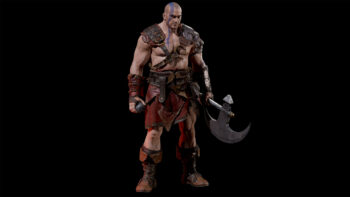 Physical:
Physical:- Combat skills: Except Leap and Berserk, every other combat skill causes more physical damage than regular Attack or Throw.
- Combat masteries: All six weapon mastery skills magnify physical damage.
- Warcries: War Cry does physical damage, but if used as a backup attack, it’s usually chosen for its defensive stun effect rather than to physically damage.
- Magic: Berserk delivers a lot of magic damage. (Most find one point in Berserk sufficient to handle physical immunes, and many “Zerkers” find just one point in some other combat skill sufficient to handle magic immunes.)
Druid
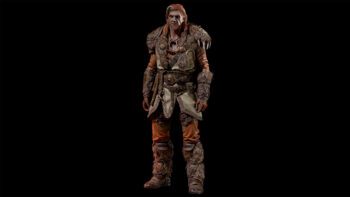 Physical:
Physical:- Summons: Ravens cause only a tiny amount of physical damage per hit, and their attack rate is pretty slow. A Grizzly is the best option for physical backup damage; it dishes out the best damage by itself, and also provides a decent damage synergy to Spirit or Dire Wolves. Heart of Wolverine also gives a worthwhile indirect damage bonus to a druid, his mercenary, and his furry pets. In a few limited situations, Spirit of Barbs can also provide a small amount of indirect damage, but that reflected damage is seldom noticeable.
- Shapeshifting: all wereform attacks cause more damage than normal Attack, except normal Attack in Werewolf form. For a character focused on Fire Claws or Rabies, any other shapeshifting skill could be an effective physical damage backup.
- Elemental: Twister and Armageddon each deliver just small amounts of physical damage. With enough skill levels and synergies, Molten Boulder, Volcano, and Tornado can deliver a lot more physical damage.
- Fire:
- Shapeshifting: with sufficient skill investment, Fire Claws can be an effective fire-damage backup.
- Elemental: with enough skill investment, Firestorm, Molten Boulder, Fissure, Volcano, or Armageddon could each be an effective fire-damage backup.
- Cold:
- Arctic Blast only does small amounts of cold damage. For a backup damage type, Hurricane can do more, as long as it has enough skill levels and synergy investments.
- Poison:
- Poison Creeper causes only tiny amounts of poison damage. But for a backup damage type, Rabies can deliver a lot more, depending on skill level and synergy.
Necromancer
 Physical
Physical- Summons: An army of Raised Skeletons can serve as a backup source of physical damage in aggregate, but only with significant skill investment. A Clay Golem gives tiny amounts of damage; it’s awesome for slowing monsters down, but not as a backup physical damage dealer. A Blood or Iron Golem‘s damages aren’t much higher, and even though a damage synergy (provided by Fire Golem) can boost their physical damages somewhat, it remains very difficult to rely on one of them for backup physical damage.
- Poison and Bone: Part of a Corpse Explosion‘s damage is physical. Quite effective, especially at long range with higher skill levels.
- Curses: In a few limited situations, Iron Maiden can provide a small amount of indirect physical damage. In certain other situations, so can Confuse or Attract. But no curse is well suited for “backup damage type” purposes; instead, please consult the “reduce resistances” section above.
- Fire:
- Summons: Some Raised Skeletal Mages use fire missiles. These need significant skill investment to be tolerably effective in hell difficulty. A Fire Golem also causes fire damage with its melee attack, and a tiny bit more fire damage every two seconds to every enemy within range of its fire aura; however, a Fire Golem is awfully difficult to manage in hell difficulty.
- Poison and Bone: Part of a Corpse Explosion‘s damage is fire. Quite effective, especially at long range with higher skill levels.
- Cold: Some Raised Skeletal Mages use cold missiles. These need significant skill investment to be tolerably effective in hell difficulty.
- Lightning: Some Raised Skeletal Mages use lightning missiles. These need significant skill investment to be tolerably effective in hell difficulty.
- Poison:
- Summons: Some Raised Skeletal Mages use poison missiles, but these cause a relatively small poison drain over a limited time.
- Poison and Bone: Poison Dagger, Poison Explosion, and Poison Nova. Any one of these probably needs significant skill and synergy investment in order to be a tolerable backup attack.
- Magic: Teeth, Bone Spear, and Bone Spirit. However, one of these probably needs significant skill/synergy investment in order to be a tolerable backup attack.
Paladin
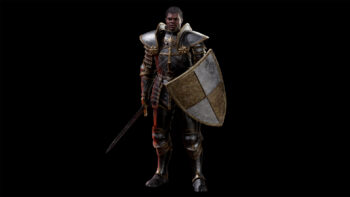 Physical:
Physical:- Combat skills: Vengeance and Conversion both cause the same physical damage as a regular Attack; Charge, Sacrifice, and Zeal do higher damage. Smite also causes physical damage, and its Holy Shield synergy makes it hit harder. Each of these is useful as a physical damage backup attack. (Smite is a popular one-point backup, not for its damage, but for its auto-hit and stun, to let a mercenary more safely engage one monster, or to apply crushing blows.)
- Auras: physical damage can be indirectly increased by Might, Concentration, or Fanatacism, and there are limited situations for which Thorns or Sanctuary each facilitate additional physical damage. Might, Fanaticism, or Sanctuary are often sufficiently effective physical damage aids in Hell, even without large skill investments.
- Fire: Vengeance, and also the Holy Fire aura. It’s probably best to synergize one of them if it’s to be an effective backup.
- Cold: Vengeance, and also the Holy Freeze aura. It’s probably best to synergize one of them if it’s to be an effective backup.
- Lightning: Vengeance and Fist of the Heavens, and also the Holy Shock aura. It’s probably best to synergize one of them if it’s to be an effective backup.
- Magic: Holy Bolt, Blessed Hammer, and Fist of the Heavens. However, each of these needs significant skill and synergy investment to be an effective backup attack. (A Concentration aura enhances Blessed Hammer, but does not enhance any other kind of magic damage.)
Sorceress
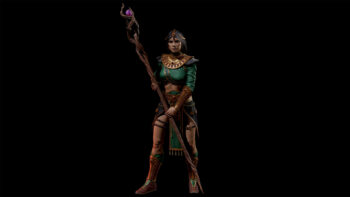 Fire: Most fire spells cause direct damage. The exceptions are Enchant, which temporarily adds fire damage to weapon attacks, and Warmth and Fire Mastery, both of which can enhance the fire damage of other fire skills. Most need synergy investments to be effective in hell difficulty. For cold- or lightning-focused sorceresses, Firewall is a popular backup attack against cold or lightning immunes, but so are Fireball, Meteor, Hydra, or Enchant.
Fire: Most fire spells cause direct damage. The exceptions are Enchant, which temporarily adds fire damage to weapon attacks, and Warmth and Fire Mastery, both of which can enhance the fire damage of other fire skills. Most need synergy investments to be effective in hell difficulty. For cold- or lightning-focused sorceresses, Firewall is a popular backup attack against cold or lightning immunes, but so are Fireball, Meteor, Hydra, or Enchant.- Cold: Most cold spells cause direct damage. The exceptions are Frozen Armor, which just temporarily freezes enemies that hit the sorceress, Shiver Armor/Chilling Armor, which only indirectly damage attackers, and Cold Mastery, which adjusts targets’ susceptibility to cold damage. Compared to other cold spells, Frost Nova‘s damage tends to be a bit lower; it is more commonly used as a defensive spell, to keep monsters chilled and slowed for longer time intervals. For fire- or lightning-focused sorceresses, either Blizzard or Frozen Orb seems to be a popular backup attack against fire or lightning immunes.
- Lightning: Most lightning spells cause direct damage, except Thunder Storm, which causes passive indirect lightning damage, and of course, Teleport and Energy Shield. Telekinesis damage is tiny, but it is effective at keeping one monster in a “hit recovery” state, to let a mercenary more safely engage it. Lightning Mastery just enhances other lightning skills’ damage. Static Field and Nova are popular backup skills for fire- or cold-focused sorceresses, but so are each of the other lightning attacks: Charged Bolt, Lightning, Chain Lightning, or Thunder Storm.
Let the Mercenary Fight Immune Monsters
“If only the moron would just stay alive…”
A Desert Town Guard or Barbarian mercenary is a very capable physical damage melee fighter, so if your hero specializes in a non-physical damage type, one of these conscripts should be good at damaging whatever your character cannot. However, it takes practice to learn how to coax them into favorable fighting situations. Each has a tendency to select a target and just go for it, heedless of whatever nearby crowd waits to surround and clobber him. Careful retreats can help him (and you) to divide and conquer whatever enemies start to chase him. If you can’t use teleport to bring your hireling to heel, you can always try a quick escape through a town portal if you need to pull your mercenary out of harms way. (Put an extra town portal scroll in one of your character’s belt slots if you think you might need to use it for a split-second getaway.)
Another popular practice is to give “life stolen per hit” equipment to mercenaries, so that they leech back some of their lost life while they fight, and survive longer that way. An easy way to make a leeching weapon is to ask Larzuk to put a socket in it, and then insert an Amn rune into the socket. Since ethereal weapons cause higher damage, a ethereal weapon socketed with Amn will leech back even more life; furthermore, if only used by mercenaries, that ethereal weapon never loses any of its durability.
A Rogue hireling also delivers physical damage. As she grows to higher levels, she also uses her fire or cold arrow skills more frequently, and when she does so, she converts more of her damage to fire/cold. She will need a hard-hitting bow if you expect her elemental damage to help you handle PI monsters.
Iron Wolves are reasonably good at delivering elemental damage, but their attacks don’t get the same synergy punch-ups enjoyed by their sorceress counterparts. This makes them rather less effective in hell difficulty than the other mercenaries. However, that doesn’t make them useless. In particular, if your character can capably take on the cold immunes, a cold Iron Wolf is reasonably good at crowd-controlling all of the other monsters for you.
Run Away
Avoid or “lure and park” whatever you and your mercenary can’t kill. Just let those immune monsters stay alive. It’s not easy, but there are lots of “single element” sorceresses that use Teleport to buzz right by immune monsters, in order to pass them and then engage whatever else is not immune. Some paladins use Charge to speed around or away from immunes. Pity that you don’t get experience points that way, though.
[last edited: 12 Nov 2021]

